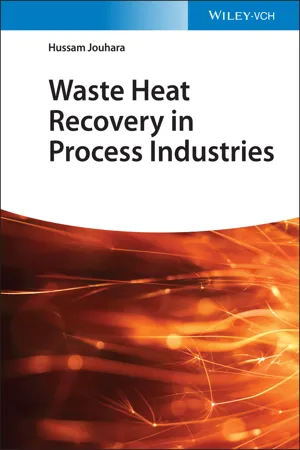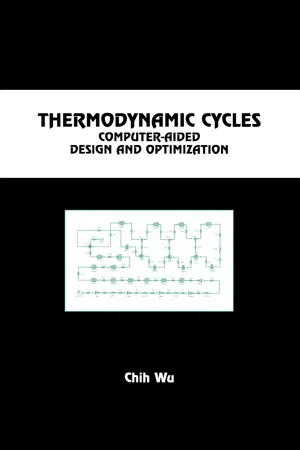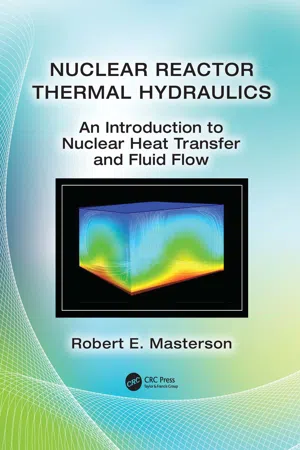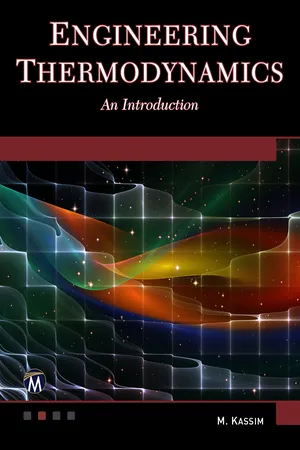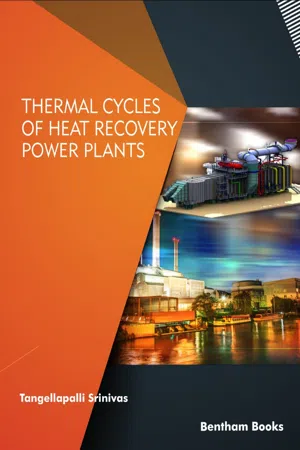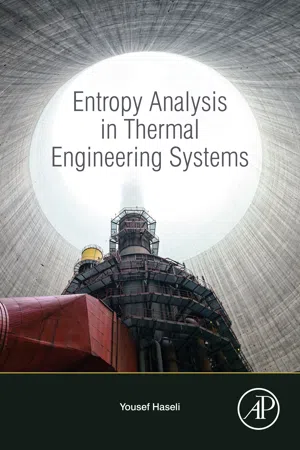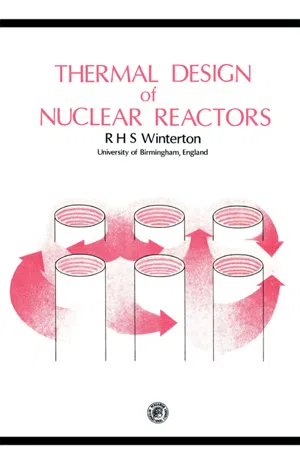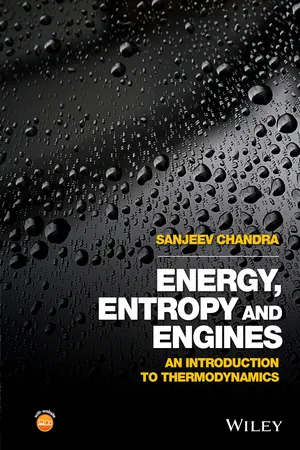Technology & Engineering
Regenerative Rankine Cycle
The Regenerative Rankine Cycle is a thermodynamic cycle used in power plants to increase the efficiency of steam turbines. It achieves this by extracting steam from various stages of the turbine to preheat the water before it enters the boiler. This process reduces the amount of fuel needed to produce the same amount of power, making it an important technology for improving energy efficiency in power generation.
Written by Perlego with AI-assistance
Related key terms
10 Key excerpts on "Regenerative Rankine Cycle"
- eBook - ePub
- D. Yogi Goswami, Frank Kreith, D. Yogi Goswami, Frank Kreith(Authors)
- 2017(Publication Date)
- CRC Press(Publisher)
Figure 9.4 .Another variation of the Rankine cycle is the regenerative cycle, which involves the use of feedwater heaters. The regenerative cycle regains some of the irreversible heat lost when condensed liquid is pumped directly into the boiler by extracting steam from various points in the turbine and heating the condensed liquid with this steam in feedwater heaters. Figure 9.5 shows the Rankine cycle with regeneration.The actual Rankine cycle is far from ideal because losses are associated with the cycle. They include piping losses due to friction and heat transfer; turbine losses associated with steam flow; pump losses due to friction; and condenser losses when condensate is subcooled. The losses in the compression (pump) and expansion process (turbine) result in an increase in entropy. Also, energy is lost in heat addition (boiler) and rejection (condenser) processes as they occur over a finite temperature difference.FIGURE 9.3 Rankine cycle with superheat.FIGURE 9.4 Rankine cycle with reheat.FIGURE 9.5 Rankine cycle with regeneration.Most modern power plants employ some variation of the basic Rankine cycle in order to improve thermal efficiency. For larger power plants, economies of scale will dictate the use of one or all of these variations to improve thermal efficiency. In most cases, power plants in excess of 200,000 kW will have 300°F superheated steam leaving the boiler reheat and seven to eight stages of feedwater heating.References
Salisbury, J. K. 1950. Steam Turbines and Their Cycles , reprint 1974. Robert K. Krieger Publishing, Malabar, FL.Van Wylen, G. J. and Sonntag, R. E. 1986. Fundamentals of Classical Thermodynamics - eBook - ePub
- Hussam Jouhara(Author)
- 2021(Publication Date)
- Wiley-VCH(Publisher)
Figure 1.20 ), and this steam is then reheated and expanded in the second turbine from MP to LP. The main advantage of the reheat is to increase the steam quality to ensure a steadier thermodynamic efficiency.Rankine cycles with reheat also ensure a higher overall mechanical efficiency by using two turbines for the cycle compared to only using one. In this configuration, the overall efficiency of the cycle is given by:(1.24)where, qinBcorresponds to the heat (kJ/kg) provided by the boiler to the fluid and qinRcorresponds to the heat (kJ/kg) provided by the reheater to the fluid (In real-life power plant, the boiler and the superheater use the same heat source.)Schematic of the Rankine cycle with reheat.Figure 1.19T–s diagram of a Rankine cycle with reheat.Figure 1.201.2.4.5 Regenerative Rankine Cycles
To improve energetic and exergetic efficiency of the thermodynamic cycle, the Regenerative Rankine Cycles extracts a portion of the steam from the turbine to heat the fluid before it is sent to the boiler. This results in a small reduction in the work provided to the turbine but a substantial reduction in the heat input, because the heating phase creates entropy and thus irreversibility if this is all provided by the boiler. The portion of steam used therefore helps the boiler heat the fluid, reducing the fuel required by the boiler and hence both energetic and exergetic efficiencies improve. Furthermore, the average temperature of the heat input by the boiler is increased and this also results in a higher energetic efficiency [8] .Regenerative cycles require a new component. A feed water heater (FWH ) also called a regenerator is required, its role being to heat the feed water before it enters the boiler. There are two different kinds of regenerative cycle: the open FWH cycle and the closed FWH cycle.Open FWH cycles use an Open FWH. As seen in Figure 1.21 , this component mixes the liquid delivered from pump 1 with the extracted steam arriving from turbine. It corresponds to point 6 on the T–s diagram shown in Figure 1.22 - eBook - ePub
Thermodynamic Cycles
Computer-Aided Design and Optimization
- Chih Wu(Author)
- 2003(Publication Date)
- CRC Press(Publisher)
Fig. 2.16 .Figure 2.15 Regenerative Rankine Cycle.Figure 2.16 Regenerative Rankine Cycle T–S diagram.The one regenerative Rankine basic cycle is composed of the following processes:1-2 Isentropic compression 2-3 Isobaric heat addition 3-4 Isentropic compression 4-5 Isobaric heat addition 5-6 Isentropic expansion 6-7 Isentropic expansion 7-1 Isobaric heat removingApplying the mass balance and the first law of thermodynamics of the open system to each of the seven processes of the Regenerative Rankine Cycle yields: andThe net work (Wnet ), which is also equal to net heat (Qnet ), isThe thermal efficiency of the cycle isExample 2.9
Determine the efficiency and power output of a Regenerative Rankine Cycle using steam as the working fluid and a condenser pressure of 80 kPa. The boiler pressure is 3 MPa. The steam leaves the boiler at 400°C. The mass rate of steam flow is 1 kg/sec. The pump efficiency is 85% and the turbine efficiency is 88%. After expansion in the high-pressure turbine to 400 kPa, some of the steam is extracted from the turbine exit for the purpose of heating the feed-water in an open feed-water heater, the rest of the steam is reheated to 400°C and then expanded in the low-pressure turbine to the condenser. The water leaves the open feed-water heater at 400 kPa as saturated liquid. Determine the steam fraction extracted from the turbine exit, cycle efficiency, and net power output of the cycle. - eBook - ePub
- V. Babu(Author)
- 2019(Publication Date)
- CRC Press(Publisher)
Both the first law and the second law efficiencies are the highest seen so far. This is due to the fact that the exergy destruction during the heat addition processes is less since the temperature at entry into the boiler is higher on account of regeneration and the partial expansion in the HPT. A summary of the performance of the Rankine cycles discussed so far is given below. It may be recalled that these cycles operate between a boiler pressure of 160 bar and a condenser pressure of 0.09593 bar.Cycle Peak temp (°C) THThermal efficiency ηthSecond law efficiency ηIISpecific work (kJ/kg)W ˙x , n e tm ˙Basic 347.4 38.31 81.43 910.1 Superheat 560 42.68 72.3 1391.69 Regeneration (open) 560 45.66 76.69 1079.12 Regeneration (closed) 560 45.72 76.74 1080.42 Reheat with regeneration 560 47 78.6 1282 In actual steam power cycles, several feedwater heaters and two or more reheat stages are used in an optimal manner in order to maximize the power output as well as the thermal efficiency. With peak temperatures at values well above the critical temperature† , the efficiencies of modern steam power plants are as high as 60 percent.11.2 Air standard cycles
It may be recalled that in section 8.2 , a heat engine was defined to be a thermodynamic system that executed a cyclic process. In the case of practical realizations such as steam power generation and vapor compression refrigeration equipment, the working substance does execute a cyclic process and hence the thermodynamic analysis of the Rankine and the vapor compression cycle presented here is quite useful and provides insights into the performance of practical cycles. In contrast, in the case of engines such as gas turbine engines and automotive engines (Fig. 2.10 - eBook - ePub
Nuclear Reactor Thermal Hydraulics
An Introduction to Nuclear Heat Transfer and Fluid Flow
- Robert E. Masterson(Author)
- 2019(Publication Date)
- CRC Press(Publisher)
https://ecourses.ou.edu/ .)(b) The temperatures and pressures at each step in the regeneration process for a coal-fired power plant (on the left) and for a nuclear power plant (on the right). Notice that coal-fired power plants operate at higher boiler temperatures and pressures than nuclear power plants do and are therefore more efficient. However, they also produce considerably more emissions.The thermodynamic cycle is completed by adding heat to the water directly from the core or through the steam generators so that the steam enters the high-pressure turbine at a pressure and an enthalpy, which corresponds to state 5. In other words, the feedwater “climbs” the left-hand side of the vapor dome shown in Figure 9.12a , and because its energy content is higher, the area under the thermal cycle curve is higher as well. This implies that the thermal efficiency is also greater . The efficiency of the Rankine cycle can be increased even further by adding additional feedwater heaters to the flow. Figure 9.12b shows the pressures at each step in this process for a coal-fired power plant on the left and for a nuclear power plant on the right. In the case of a coal-fired power plant, the temperatures and pressures at state 5 are higher because the boiler operates at a much higher temperature. Thus, the steam at this point has more internal energy. For example, in a BWR, the system pressure is about 7 MPa and the saturation temperature is about 286°C, while in the secondary loop of a PWR, the system pressure is about 7 MPa and the superheat temperature is about 292°C because the steam generators are designed to superheat the steam. The pressure at point 5 in a coal-fired power plant is about 15 MPa, while the temperature is about 600°C. Now let us compare the enthalpies at each step in this process. For a coal-fired power plant, the enthalpies at points 1 through 7 areThese enthalpies assume the use of a single open feedwater heater. If a BWR or PWR is designed with the same feedwater heater, the corresponding enthalpies would beThe Enthalpies for a Coal-Fired Power Plant with an Ideal Regenerative Rankine Cycle
(9.27)h 1= 191.8 kJ/kgh 2= 193.0 kJ/kgh 3= 798.3 kJ/kgh 4= 814.0 kJ/kgh 5= 3,583.3 kJ/kgh 6= 2,860.2 kJ/kgh 7= 2,115.3 kJ/kgThe Enthalpies for a PWR with an Ideal Regenerative Rankine Cycle
- eBook - ePub
Engineering Thermodynamics
An Introduction
- M. Kassim(Author)
- 2022(Publication Date)
- Mercury Learning and Information(Publisher)
E exiting from the regeneratorThe energy balance of the low-pressure FWH is given as follows:Energy entering the regenerator = Energy parting the regenerator6.6.5 The Placement of FWHsFor maximum thermal efficiency, it is very important to decide the pressure of bled steam from turbine.6.6.6 Reheat CycleThe thermal effectiveness of the cycle can be increased by the following methods:Reheating systemi. Regenerative feed water heating.ii. Binary vapor cycle.iii. Reheating of steam.iv. Removal of water.Advantages of reheating:Figure 6.28(b) shows schematic diagram and T -S diagram of an ideal reheat Rankine cycle.Steam is expanded in the high-pressure turbine isentropically to an intermoderate pressure and sent back to the boiler for reheating to initial temperature. Steam is expanded isentropically in the low-pressure turbine to the condenser pressure.(6.49)The improvement in thermal efficiency by reheating depends on the reheat pressure with reference to the inlet stem pressure.FIGURE 6.28(A) Ideal reheat Rankine cycle.FIGURE 6.28(B) T -S diagram of ideal reheat Rankine cycle.Figure 6.29 shows the reheat pressure versus cycle efficiency.FIGURE 6.29 Reheat pressure versus cycle efficiency.Disadvantages of reheating:1. Output power increases.2. Heat supply increases.3. Thermal efficiency increases.4. The wetness drops and corrosion of blade becomes less. This leads to the increase in turbine life.1. Added equipment and piping increase plant cost and operational reliability decreases.2. The increase in thermal efficiency may not offset the disadvantages of plant complexity.EXAMPLE 6.6In an ideal reheat Rankine cycle steam power plant, steam vapor enters the turbine at a temperature of 600.00 ° C and pressure of 15000 kPa, and is condensed at 10.000 kPa. The vapor moisture at the exit of turbine should not exceed 10.400%, calculate the following: - eBook - ePub
- Tangellapalli Srinivas(Author)
- 2021(Publication Date)
- Bentham Science Publishers(Publisher)
Steam Rankine Cycle Tangellapalli SrinivasAbstract
Steam Rankine cycle (SRC) is a widely used thermal power cycle due to its ideal properties of the fluid. Compared to organic Rankine cycle (ORC) and organic flash cycle (OFC), the working fluid and equipment are not expensive. A water treatment plant is associated with a steam thermal power plant. SRC is a power plant cycle in thermal power plant, bottoming cycle in a combined cycle power plant or power generation cycle for a waste heat recovery plant. In this chapter, the performance characteristics of SRC have been developed and analyzed. A single pressure heat recovery steam generator (HRSG) with a deaerator is considered to draw the heat from the industrial waste heat. The conditions for maximum power and maximum efficiency have been developed. Correlations are presented to find the HRSG pressure at the available hot gas supply temperature. The work is extended to a case study on SRC operating with the heat recovery of a cement factory. A power plant layout suitable to the identified waste heat sources from a cement factory has been developed. From the evaluation, it has been concluded that approximately 15 MW of electricity can be generated from its waste heat to meet the electrical load of 15 MW. It indicates that at the optimized conditions, it is possible to self-generate the electrical demand of the cement factory from its own waste heat recovery. The analysis recommended a low pressure in HRSG for maximum power generation.Keywords: Heat recovery, Rankine cycle, Steam power cycle, Thermal efficiency, Thermal power plant.INTRODUCTION
In majority of countries, more than 50% of electricity is from thermal power plant with steam as a working fluid. The power cycle is a steam Rankine cycle (SRC). Water is the ideal fluid for power. To operate SRC, a water treatment plant is required. The thermal properties of water/steam are superior than the others. Large size power plants can be suitably built with water as the working fluid. The equipment and systems are well developed and available around the world. The main challenges of thermal power plants are the handling of dust, ash and environmental pollution caused by the burning of coal. The ash and emission issues can be addressed by shifting from coal firing to heat recovery option or biomass firing. SRC is not suitable for a power plant with low temperature heat source. Organic Rankine cycle (ORC) is similar to SRC layout. - eBook - ePub
- Yousef Haseli(Author)
- 2019(Publication Date)
- Academic Press(Publisher)
Fig. 8.4 is that a major source of inefficiency in the gas turbine cycle is the significant amount of thermal energy that is wasted with no further use in the downstream. In modern designs of gas turbine engines, a recuperator is placed after the turbine to recover part of the thermal energy of the hot flue gases. Depending on the application, the recovered heat is used to either preheat the pressurized air before the combustor or produce superheated steam to run a downstream Rankine cycle. The former design is referred to as the regenerative gas turbine cycle, and the latter is known as the combined cycle.Recycling the heat recovered from the hot exhaust gases back to the process boosts the overall power generation efficiency. Both regenerative gas turbine and combined cycles will be discussed in the upcoming sections. Further improvement in the efficiency of the gas turbine cycle would be possible by enhancing the efficiencies of the compressor and turbine.8.5 Regenerative gas turbine cycle
A schematic of a regenerative gas turbine cycle is depicted in Fig. 8.5 . It consists of an air compressor, a fuel compressor, a heat exchanger (recuperator), a combustor, and a turbine. The pressurized air is preheated in the recuperator using the hot combustion gases coming from the turbine. This design reduces the fuel consumption of the cycle compared to the simple gas turbine cycle of Fig. 8.2 .Fig. 8.5 Schematic of a regenerative gas turbine cycle.8.5.1 Determination of SEG
The thermodynamic model of the regenerative cycle is similar to that of the simple gas turbine cycle described in Section 8.4 . Here, we need to also account for the temperature increase of the air after the compressor by including a recuperator model.The specific enthalpy of the air at states 2 and 3 in Fig. 8.5 can be related to the specific enthalpy of the flue gases at state 5, h 5 - eBook - ePub
- R. H. S. Winterton(Author)
- 2014(Publication Date)
- Pergamon(Publisher)
h cannot be increased because of temperature limitations in the core. Water in particular is not a high-temperature reactor coolant. Since the critical temperature and pressure of water are 374ºC and 221 bar respectively, there is little scope for increasing core outlet temperatures much above the present levels of 310º to 320º (PWR). If the water at the core outlet were brought up to the critical conditions the quite modest improvement in the temperature would be accompanied by one-fifth the density and nearly double the pressure. To achieve the same moderating effect with the reduced density the flow area between the fuel rods would have to be increased by a factor of 5. The increased capital cost of the larger, higher pressure, core would outweigh any improvement in thermal efficiency. In fact, a single pressure vessel to contain the core would be difficult to construct with present techniques.The low temperature in the cycle is limited by the availability of cooling water. If cooling water at 15ºC is available from the sea or a river and is allowed to rise in temperature to 25ºC before discharge, and the pinch-point temperature difference in the condenser is 5ºC, then the steam will condense at 30ºC (saturation pressure 0.042 bar). Clearly it will not be possible to do much better than this, so T c is largely fixed by the location of the power station and the time of year.FEED WATER HEATING (REGENERATION)
Heat rejection in the Rankine cycle occurs entirely at the lowest temperature in the cycle, but not all of the heat in the boiler is supplied at the highest temperature; some heat is required to bring the feed water up to the boiling-point.If the heat required between points 1 and 2 (Figs. 9.3 and 9.4 ) could be supplied internally within the cycle then all the heat supplied by the reactor would be at the highest temperature, the boiling-point, and for an ideal reversible cycle the efficiency would equal that of the Carnot cycle.The way in which this is done is to extract some of the steam at intervals in the turbine, and use this steam to warm the feed water in a number of feed heaters, as shown in Fig. 9.6 . The two feed heaters shown are of the closed type, that is, they are shell and tube heat exchangers with the steam and water flows kept separate. The condensed steam from the higher temperature heater is throttled to the pressure of the steam in the next, lower temperature, feed heater, and mixed with it. The other type of feed heater is the open or direct contact feed heater where the steam bled off from the turbine and the feed water are simply mixed together.Fig. 9.6 - eBook - ePub
Energy, Entropy and Engines
An Introduction to Thermodynamics
- Sanjeev Chandra(Author)
- 2016(Publication Date)
- Wiley(Publisher)
regeneration, increases the temperature of the water entering the boiler and therefore the thermal efficiency of the cycle.Heat added to subcooled water in boiler of Rankine cycle to bring it to the saturation temperature.Figure 9.69.3.1 Open Feedwater Heater
Figure 9.7 shows how to preheat the water before it enters the boiler by extracting some steam after the high-pressure stage of the turbine (state 5) and supplying it to a heat exchanger known as a feedwater heater. The remaining steam expands through the low-pressure stage of the turbine before entering the condenser (state 4). Saturated liquid leaving the condenser (state 1) is compressed by a pump and fed back into the feedwater heater (state 2). There the subcooled water mixes with the steam extracted from the turbine. This type of heat exchanger, in which the two fluid streams mix, is known as an open feedwater heater. The amount of steam added is just enough that the liquid leaving the feedwater heater (state 6) is saturated. A second pump compresses this liquid and supplies it to the boiler (state 7) where it is heated and sent to the turbine (state 3). Figure 9.8 shows a T-s diagram of a Rankine cycle with regeneration using an open feedwater heater.Rankine cycle with regeneration using an open feedwater heater.Figure 9.7A mass balance around the turbine givesRankine cycle with regeneration using an open feedwater heater.Figure 9.8(9.13)where is the total rate of mass flow of fluid in the cycle, the mass flow rate of steam extracted from the turbine and the balance that flows through the second stage of the turbine. Let f
Index pages curate the most relevant extracts from our library of academic textbooks. They’ve been created using an in-house natural language model (NLM), each adding context and meaning to key research topics.

